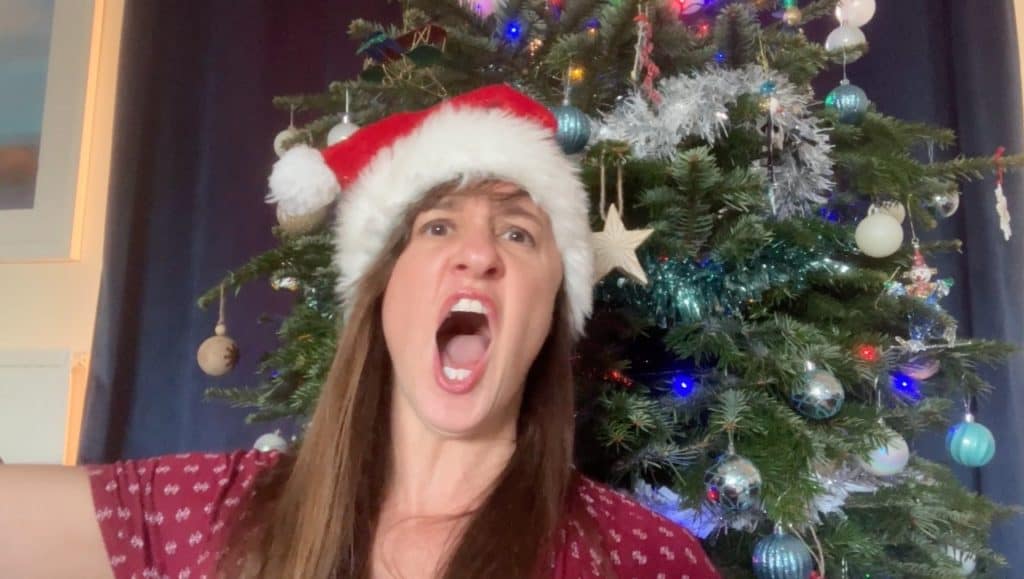
Enjoy this cheesy festive treat – The 12 Days of Christmas rewritten for editors and writers everywhere. Apologies in advance for the singing.
Over the past 12 weekdays, I’ve been posting a ‘day of Christmas’ each day on social media. Search for #12DaysOfChristmasEditorEdit on LinkedIn, Instagram or Facebook to catch all the instalments!
Scroll to the end of this blog post to see the full song in all its out-of-tune glory. Yes, I’m singing … well, sort of.
🎶 On the first day of Christmas, my client sent to me…
… a plot hole in their story 🎶
Today is the first day and my client has sent me a plot hole.
What’s a plot hole?
A plot hole is an inconsistency in your story that’s never explained. Some examples are:
- Illogical events, actions or choices
- Problems with the timeline
- Unfinished subplots
- Incorrect details
How to avoid plot holes
Plot holes are common in the first draft. You’re so into your story world, it’s hard not to drop a ball or two. During subsequent drafts, look out for the issues listed above. Keep detailed notes of character descriptions, locations, timelines and subplots so you’re more likely to spot plot holes.
And, of course, a good editor can spot the ones you miss. (Rest assured that I’m better at editing than singing.)
🎶 On the second day of Christmas, my client sent to me…
… too much description 🎶
Today is the second day and my client has sent me too much description.
Why is too much description not great in a story?
Too much description pulls your reader out of your story because it ‘tells’ not ‘shows’, distances them from the characters and plot, and limits their imagination.
How to avoid too much description in your story
Here are some ways to avoid too much description in your story:
- Trust your readers to ‘get it’, rather than spoonfeeding them every last detail.
- Hone your ‘telling not showing’ skills by reading around this topic and practicing, practising, practising.
- Cut out the whole descriptive paragraph you’ve written, then drop only the essential details into the scene.
When you’re writing your first draft, don’t worry too much about this. Let your creative juices flow and keep moving forward. During subsequent drafts, look out for places where you’ve used too much description and pare it back.
And, of course, a good line editor will point this out to you and offer suggestions on how to reduce your description.
🎶 On the third day of Christmas, my client sent to me…
… three double spaces 🎶
Today is the third day and my client has sent me three double spaces.
Why are double spaces to be avoided?
When I was a child, I taught myself to touch type on my mum’s manual typewriter, using the book ‘Teach Yourself Typing’. (The wonderful ‘Teach Yourself’ books are still going!) The book taught me the standard rule at the time: a double space after full stops/periods.
Double spaces were the norm because typewriters accorded every character the same amount of space on the page (monospaced type). Double spaces after full stops made it clear where new sentences began.
However, these days our computer programs use proportionally spaced fonts (e.g. ‘i’ takes up less horizontal space than ‘w’), so there is no need for double spaces.
Double spaces in your manuscript can:
- diminish readability
- make your manuscript look out of date
- look like an error
How can an editor help?
A copyeditor will root out these pesky double spaces, often ‘silently’ replacing them (outside tracked changes) so you don’t have to manually accept every instance of these tiny changes.
🎶 On the fourth day of Christmas, my client sent to me…
… four talking heads 🎶
Today is the fourth day and my client has sent me four talking heads.
What are talking heads?
The phenomenon of talking heads occurs when two (or more) characters are chatting away, but their surroundings, actions and reactions are a mystery because the author hasn’t described them.
If you could move your characters, still happily talking, to another location (a boat, a desert, the top of the Eiffel Tower) without having to make significant changes, your scene is probably suffering from Talking Heads Syndrome.
How to avoid talking heads in fiction
You can avoid talking heads in your book by:
- showing the reader your characters’ reactions to their environment and what the other person is saying
- dropping in descriptions about the scene
- giving your characters a subtask to complete during the dialogue (ideally, this will show a facet of their personality, add to the scene’s conflict, and/or foreshadow a later plot point)
- only including essential dialogue (no need to include every salutation and line of small talk)
- using actions as subtext (e.g. rather than telling the reader your character is nervous, have them fiddle with an item of jewellery)
A line editor will alert you to any talking heads in your manuscript and offer suggestions on how to avoid this.
🎶 On the fifth day of Christmas, my client sent to me…
… five tautologiiiieeees 🎶
Today is the fifth day and my client has sent me five tautologies.
What is a tautology?
A tautology occurs when the same idea is written in two different ways. In the realm of philosophy, it’s also a statement that is true by its logical form alone (but we’re not getting all deep and thinky today).
Tautologies can provide a creative or dramatic effect in poetry, comedy and songs, but in fiction and non-fiction they are generally considered an error of style. Avoiding tautologies will make your writing more concise, strong and engaging.
Tautology examples
Here are a few examples of tautologies (some are more obvious than others):
- They walked to the summit at the top of the hill.
- It was adequate enough.
- They were in close proximity to the target.
- It was a free gift that cost nothing.
- He was so excited, he could hardly contain his enthusiasm.
- It was a scorching, hot day.
- She slipped on the frozen ice.
- Suddenly, the monster burst out of the cupboard.
A line editor will pick up on tautologies in your writing and offer suggestions on writing more concisely in general.
🎶 On the sixth day of Christmas, my client sent to me…
… six modifiers dangling 🎶
Today is the sixth day and my client has sent me six modifiers dangling.
What is a dangling modifier?
A dangling modifier is one of my favourite terms in the grammar world because it sounds rather cheeky. It occurs when the correct subject is missing from the sentence, leaving the modifier (a word or phrase that describes or clarifies) out on a limb. A dangling modifier usually takes the form of an introductory clause being attributed to the wrong thing.
Examples of dangling modifiers
It’s hard to explain in a definition, so let’s look at a few examples:
- ❌ After closing the door, coats were taken off. (Coats can’t close doors)
- ✅ After closing the door, they took off their coats.
- ❌ Walking in the rain, the trees dripped on my head. (Trees can’t walk)
- ✅ Walking in the rain, I shivered as the trees dripped on my head.
- ❌ Shooting the winning goal, the stadium erupted in raucous applause. (Stadiums/stadia can’t shoot goals)
- ✅ As Liverpool shot the winning goal, the stadium erupted in raucous applause.
An editor will spot dangling modifiers in your text and suggest a correct way of writing your sentence.
🎶 On the seventh day of Christmas, my client sent to me…
… seven typos glaring 🎶
This version of the song is now firmly stuck in my head. I keep hearing these lyrics rather than the original ones. Tell me I’m not alone!
Today is the seventh day and my client has sent me seven typos glaring.
What is a typo?
The term ‘typo’ is often misattributed to a host of issues. Short for ‘typographical error’, a true typo is caused by simply mistyping a letter. The writer knows how to spell the word, but their fingers got a bit over-excited.
Any word can contain a typo, but some are more prone to them than others due to the position of certain letters on a conventional keyboard or similarity to another word.
How to reduce typos
We all make typos, but here are a few ways you can reduce the chances of them appearing in your final work:
- Use a spell checker or autocorrect tool (but don’t automatically accept the suggestions, as these tools are regularly WRONG!)
- Double-check, even triple-check, your work.
- Leave some time between finishing your work and doing a final check. There’s a lot to be said for fresh eyes!
- Read aloud the finished draft.
- Print out your work. Seeing it in a different format can make typos jump out in a way they didn’t on screen.
- Change your work to a different font. Some fonts make certain typos harder to spot than others.
- Hire an editor or proofreader.
🎶 On the eighth day of Christmas, my client sent to me…
eight commas splicing… 🎶
After a weekend break, the song you all love to hate is back with a vengeance. Follow #12DaysOfChristmasEditorEdit so you don’t miss the final four!
Today is the eighth day and my client has sent me eight commas splicing.
What is a comma splice?
A comma splice occurs when a comma is used to link together two independent clauses (that would stand alone as separate sentences) when they should be linked by a semi-colon or conjunction (e.g. ‘and’, ‘but’, ‘if’). Alternatively, they could be split into two sentences.
Examples of comma splices
Here are some examples in case you’re scratching your head!
- ❌ A tomato is not a vegetable, it’s a fruit.
- ✅ A tomato is not a vegetable; it’s a fruit. (semi-colon fix)
- ❌ The clouds were black, we thought it was going to rain.
- ✅ The clouds were black, so we thought it was going to rain. (conjunction fix)
- ❌ I’m writing a book, it’s a mystery set in the south of France.
- ✅ I’m writing a book. It’s a mystery set in the south of France. (two-sentence fix)
🎶 On the ninth day of Christmas, my client sent to me…
nine hyphens missing… 🎶
Today is the ninth day and my client has sent me nine hyphens missing.
Why are hyphens important?
Hyphens are used to show the connection between two elements (e.g. words, prefixes, letters).
They are mainly used for:
- compound adjectives, nouns and verbs (e.g. light-brown, son-in-law, to ice-skate)
- joining prefixes to words (e.g. self-sufficient)
- double-digit numbers (e.g. twenty-seven)
- separating letters or numbers (e.g. You spell it W-E-I-R-D.)
- word breaks across lines
When they’re missing, it can confuse the reader and weaken your writing.
Examples of hyphens
Ponder the difference in meaning of the couplets below:
🔶 Look, it’s a man eating chicken! (welcome to Nando’s)
🔷 Look, it’s a man-eating chicken! (scary poultry)
🔶 The eleven year-old children are playing piano. (eleven prodigy babies)
🔷 The eleven-year-old children are playing piano. (adolescent musicians)
🔶 I have a wonderful son in law. (barrister offspring)
🔷 I have a wonderful son-in-law. (proud mother-in-law)
🎶 On the tenth day of Christmas, my client sent to me…
ten trackèd changes… 🎶
[NB. the è in ‘trackèd changes’ is purely for style/pronunciation/comedic value and is not the way you actually write ‘tracked changes’. Don’t send me letters.]
Today is the tenth day and my client has sent me ten tracked changes.
What are tracked changes?
This is a departure from grammar/punctuation errors, mainly to make the silly joke with the accented ‘e’. I know, I’m a child; what can I say?
It’s usually the editor, not the client, who sends the tracked changes, but they’re so important in the word of editing, they deserve a place in this festive series. Plus, clients do occasionally send them, so don’t cancel me!
Tracked changes are used in Microsoft Word (similar to ‘suggestions’ in Google Docs) to show what has been changed in the document. They allow the author to retain control over their manuscript, as suggested changes can be easily accepted or rejected.
Style note: ‘Track Changes’ (initial capitals, no —ed) is the name of the tool in Word; ‘tracked changes’ (no caps, —ed) describes the actual changes. You may have seen ‘Tracked Changes’ or ‘track changes’. These are WRONG!
Track Changes tips
Here are a few tips when working with Track Changes:
- Toggle between viewing all changes and comments, comments only or none at all (without removing anything) via Review > Track Changes and choosing All Markup, Simple Markup or No Markup.
- If you turn off Track Changes, remember to turn it on again if you’d like to continue tracking! Sounds obvious but easily missed. There are useful macros that turn the background a different colour when Track Changes is off.
- Accept and reject individual suggestions or all of them at once, depending on your needs.
🎶 On the eleventh day of Christmas, my client sent to me…
eleven heads a-hopping… 🎶
Today is the eleventh day and my client has sent me eleven heads a-hopping.
What is head-hopping?
Head-hopping occurs when the narrative switches from one character’s point of view (POV) to that of another. The reader is happily in the thoughts and lived experience of Jack, when, without warning, they’re told how Jill is feeling. Oopsie.
This pulls the reader out of the story, reduces suspense and can be confusing.
Many books swap POV from chapter to chapter, or scene to scene, and that’s fine. Head-hopping occurs when the POV switches in the same scene or paragraph without a signal (e.g. a chapter or section break).
How to avoid head-hopping in fiction
Here are a few tips on how to avoid (or fix) head-hopping:
- Carefully read your scene, noting instances of “How could the POV character possibly know that?”
- Describe behaviours, rather than feelings and thoughts, of any character other than the POV character.
- Show other characters’ feelings through intuitive guesses of your POV character, rather than directly.
- If you need to switch POV, show the change with a chapter or section break.
🎶 On the twelfth day of Christmas, my client sent to me…
twelve passive voices… 🎶
Today is the twelfth day and my client has sent me twelve passive voices.
What is passive voice?
Passive voice is produced when the subject receives the action (e.g. The flute was played by Nicola), rather than active voice, where the subject performs the action (e.g. Nicola played the flute).
As a general rule, avoid passive voice where possible. It creates wordy, unclear phrases and can weaken your writing. Active voice is more concise and engaging.
Examples of passive voice used well
However, sometimes passive voice is the best option. Here are a few examples:
- If the subject is unknown and/or you’d like to emphasise the object (e.g. My van was stolen yesterday)
- If the subject is avoiding blame (e.g. Mistakes were made)
- Stock phrases (e.g. Don’t be fooled!)
- Scientific contexts (e.g. The cat was placed in the box)
- In broad statements about social norms or common opinion (e.g. It is believed he stole over a million pounds.)


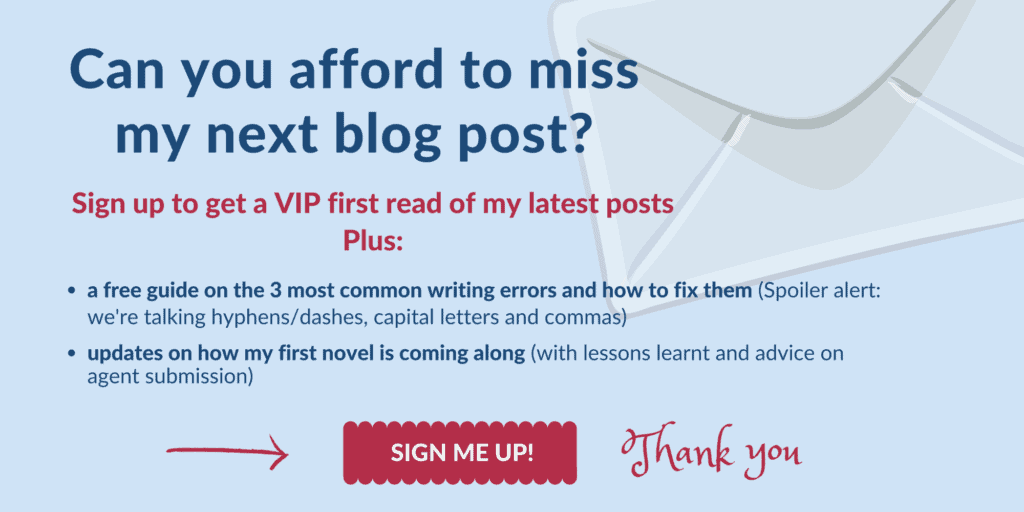

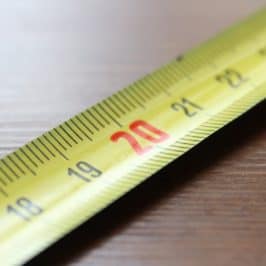

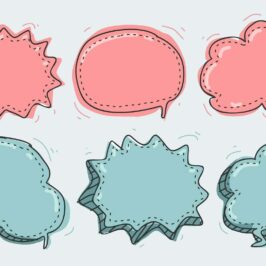

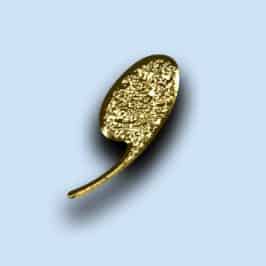
Sally M. Chetwynd
Fantastic! I’m sending this to all my writing and editing friends!
Take a deep breath and have a most Merry Christmas!
Debbie Emmitt
Thanks, Sally! I hope you still have your friends after inflicting this on them. Happy New Year!
Debbie Wilson
Enjoyed your clever way of presenting excellent writing tips. Merry Christmas!
Debbie Emmitt
Thanks, Debbie. Happy New Year! (Great name, btw!)